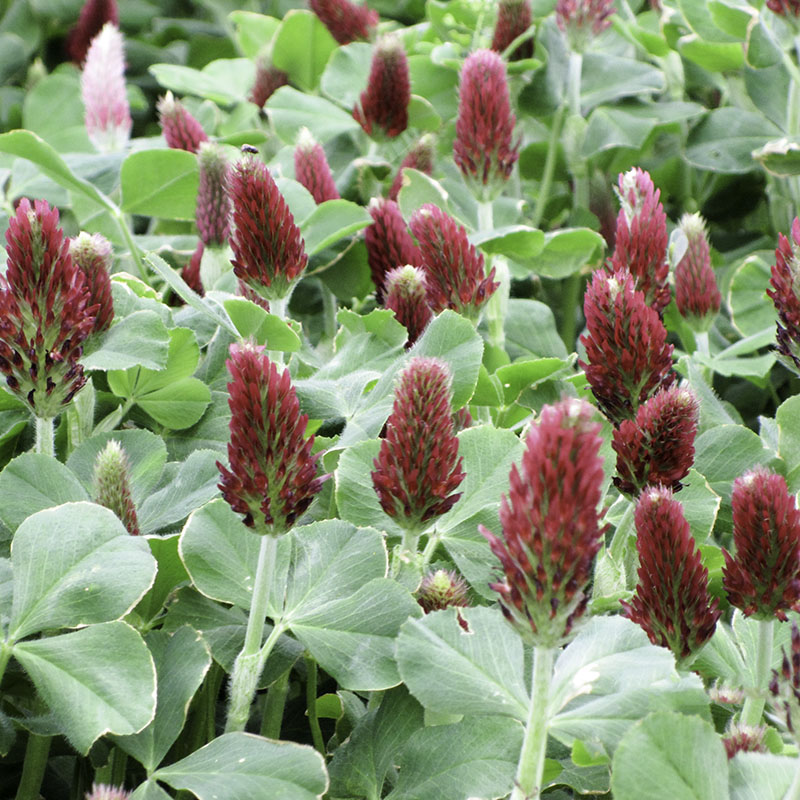Description
Crimson clover is semi-upright winter annual legume that germinates quickly and prefers well drained soil. Crimson tends to remain actively growing in cooler temperatures when warmer-season clovers go dormant. Crimson can be successfully established in the fall and spring. To maximize success in late summer plantings, seed at least 6-8 weeks before frost. Spring plantings should occur after all danger of frost has past.
At termination, the dense growth forms a mat that helps suppress winter annual weeds and conserve soil moisture. Its fine roots help build soil structure and improve microbial activity. Crimson Clover attracts beneficial insects, such as ladybugs. Fast, vigorous growth, excellent N source, soil builder, and good for grazing or haying. Crimson clover has the potential to produce from 70 to 150 units of N.
Crimson clover should be inoculated before seeding. Crimson clover, unlike red clover, does not do well when frost seeded. It is better to seed after wheat or small grain is harvested in late summer.
Carbon/Nitrogen Ratio (C:N): 15:1 – 20:1
Suggested seeding rate:
- Seed 10-15 lbs/acre alone or 4-8 lbs/acre in a mix.
- Broadcast/Aerial: 6-8 lbs/acre.
- For forage 15-20 lbs/acre.
Approx. seeds/lb: 150,000
Preferred soils: Adapted to a wide variety of soils as long as soil is well drained. Ideal pH of 5.5 – 7.0.
Seeding depth: Seed 1/8 – 1/4″ deep in a firm, moist seedbed.
Ave. emergence time: 7-10 days
Planting window: August – September.
- In soybeans, overseed by highboy or aerial apply at leaf drop.
- In corn, can be planted at the V4 to V8 stage or after canopy opens in late summer.
- After wheat or small grain harvest
- In early fall after potatoes, vegetables, etc… are harvested
Control: Spring burndown with one pint of 2,4-D type herbicide along with one quart glyphosate.








